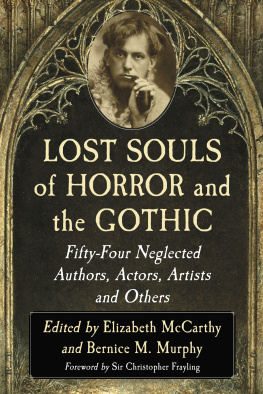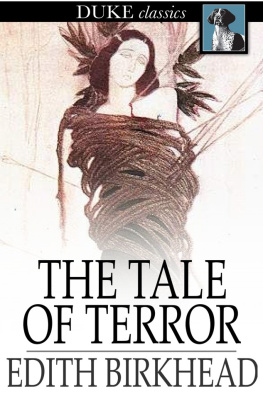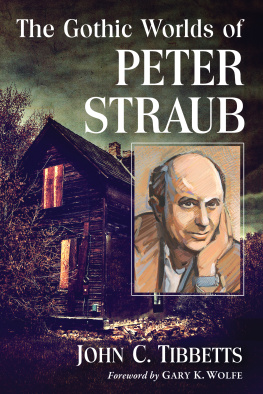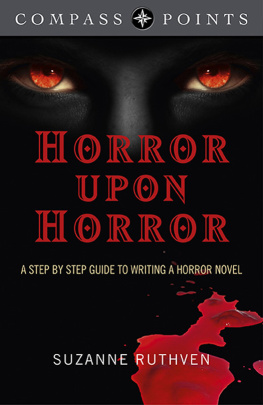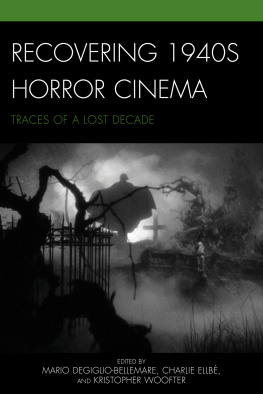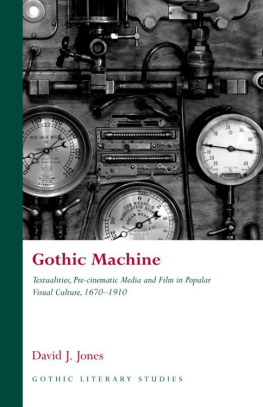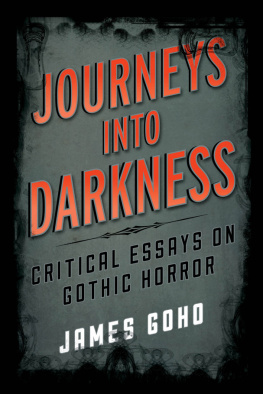
Lost Souls of Horror and the Gothic
Fifty-Four Neglected Authors, Actors, Artists and Others
Edited by ELIZABETH MCCARTHY and BERNICE M. MURPHY
Foreword by SIR CHRISTOPHER FRAYLING

McFarland & Company, Inc., Publishers
Jefferson, North Carolina
ISBN (ebook) 978-1-4766-2653-6
LIBRARY OF CONGRESS CATALOGUING DATA ARE AVAILABLE
BRITISH LIBRARY CATALOGUING DATA ARE AVAILABLE
2016 Elizabeth McCarthy and Bernice M. Murphy. All rights reserved
No part of this book may be reproduced or transmitted in any form or by any means, electronic or mechanical, including photocopying or recording, or by any information storage and retrieval system, without permission in writing from the publisher.
Front cover: (top inset) Aleister Crowley, 1906; background illustration 2016 Yaroslav Gerzhedovich
McFarland & Company, Inc., Publishers
Box 611, Jefferson, North Carolina 28640
www.mcfarlandpub.com
Acknowledgments
The editors would like to thank the School of English, Trinity College Dublin, for supporting this project, and in particular for facilitating the award of a Patrick Kavanagh bursary which aided us in meeting editorial costs. We are also very grateful to Dr. Kate Roddy for her tireless and astute fact-checking work. The support and encouragement of our friends and colleagues at The Irish Journal of Gothic and Horror Studies and the M.Phil in popular literature program is, as always, much appreciated. This book simply would not have been possible without the work of our many contributors, and we cannot thank them enough for the work and thought that they put in to their individual entries. We are also very grateful to Sir Christopher Frayling for kindly agreeing to write the foreword. Bernice M. Murphy would like to thank her family for their continuing support and encouragement. Elizabeth McCarthy would like to thank Paul Cronly for respecting the deadlines she has to meet while making sure wine, song, and dance are never left off the schedule for too long: Im thinking that it must be love.
Foreword: Welcome to the Island of Lost Souls
SIR CHRISTOPHER FRAYLING
Ever since the rise of Gothic studies as an area of serious academic endeavor half a century ago, in pushback against the accepted tradition of literature, most books about the Gothic have been merrily trusting each others judgment about who should be saved and who should be lost. Even though academic specialists in this area often liked to position themselves as in opposition to establishment methods of literary criticism, in a beleaguered way, some age-old assumptions were carried over. In particular, an apostolic successionor canon as it came to be knownof key Gothic writers soon emerged, the ones who should be saved: a great chain of heroes andimportantlyheroines which began with Horace Walpole, matured with Ann Radcliffe, was popularized by Jane Austens horrid novels, diversified with Monk Lewis, Mary Shelley and Charles Maturin and then went multimedia. The links in the chain were left largely unexamined, as were examples of the Gothic in other art forms. These were Lost Souls. What happened during the many years between Walpole and Radcliffe? What were young painters and sculptors up to, in the same period? What became of those many writers whose tales of wonder failed for one reason or another to enter the cultural bloodstream? And so on. It took a long time for such questions to be asked, and in some cases they are still in the process of being answered.
Parallel studies of horror films were also surprisingly quick to establish an apostolicor should that be diabolic?succession of key stylistic moments: German Expressionism, Hollywoods Universal horror, Technicolor costume dramas with Hammer, domestication and radicalization by independents in the 1970s, then the move from guilty pleasure to mainstream entertainment. Each moment had its own director-heroes. It was as if a kind of natural selection was at work. Studies of what was happening between these moments, and by whom, were also a long time coming.
What of the writers and film directors, the books and the films, the visualizers and the performers who fell between the cracks in the floorboards, many of them having lost their footing in the mists of literary or film theory? Were they to be consigned to a purgatory of neglect, waiting to be promoted to the paradise of academic respectability or demoted to the inferno of oblivion? Or were they to be kept alive only in the blotchy pages of fanzines lovingly assembled by hard-line buffs and collectors, well below the taste threshold of most academic commentators? Who would have the energy and interest to dig deep enough to resurrect them from the enormous condescension of posterity?
I first saw Erle C. Kentons The Island of Lost Souls (1932) in the mid1960s, as part of a season of transgressive horror films organized by a student film society, in a double bill with Mark Robson and Val Lewtons Isle of the Dead (1945). The program notes owed a lot to the then-untranslated theoretical writings of Georges Bataille. These particular Lost Souls on their remote island had fallen foul of the British Board of Film Censors on three separate occasions1933, 1951 and 1957, which may be a recordbut the film had finally and reluctantly been passed with cuts in summer 1958. The hint of bestiality, the vivisections, the cross-breeding of the species, the implied cruelty to animals in the House of Pain, the Panther Woman sinking her claws into the all-American hero, the emphasis throughout on un-natural selectionnot to mention Charles Laughton brandishing a whip and (presumably) asking the creationists in the audience, Do you know what it means to feel like God?were all thought to be well beyond the pale, and so banished from the mainland just like Dr. Moreau himself. Laughtons bio-anthropological experiments with plastic surgery, blood transfusions, gland extracts and ray bathsof necessity more explicit on screen than in H.G. Wellss short novel of 1891, The Island of Dr. Moreau (Wells himself was disgusted by the film, rightly feeling that his theological implications had become somewhat sidelined in all the excitement)still seemed transgressive some thirty-five years later, and the films reputation as a subversive horror movie was intact. But it had all but disappeared from view, where British audiences were concerned, between 1932 and 1958. Nowadays, The Island of Lost Souls is classified PG (Parental Guidance) for home viewing, and thats with the cuts restored. The borders of transgression are shifting ones, as Bataille often pointed out.
The point is that since first seeing The Island of Lost Souls, I have always associated Arnold Boklins painting of 1880 The Isle of the Dead with Dr. Moreaus other islandpartly because the supporting feature screened that evening was directly inspired by it and the painting actually appeared behind the opening credits; partly because Dr. Moreaus island in the Kenton film has a similarly creepy atmosphere albeit with a different, South Seas, ecology. Boklins isolated, rocky islandwith its tall cypress trees, rock-tomb entrances, and mysterious white-clad figure arriving in a rowing boat on a wine-dark seabecame in my minds eye the place where lost souls went. And after that, the painting kept appearing in films I subsequently saw: Skull Island in
Next page
